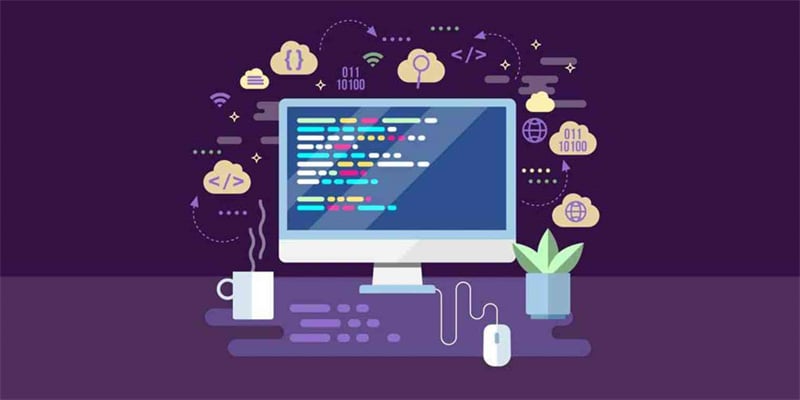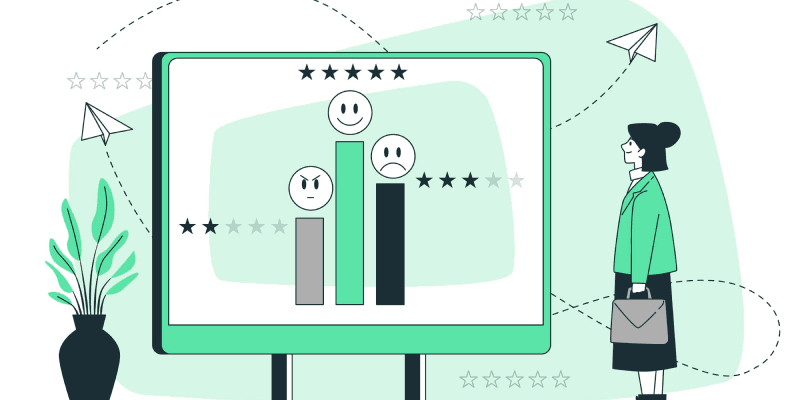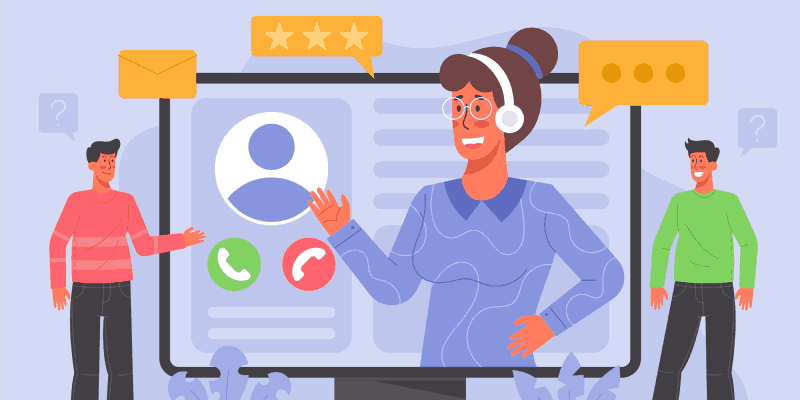Automated Customer Onboarding Process & Its Benefits

Customer onboarding is one of the key points for SaaS businesses, and if executed well, it can ensure growth, sustainability, and long-term customer relationships.
By leveraging automated customer onboarding processes, companies can streamline and enhance onboarding experiences and ensure personalized and seamless journeys for new users. The automation can cover various stages, from sign-up to product exploration, and guide users through the software’s key features to help them drive value from it quicker.
Bearing this in mind, it is no wonder that many SaaS companies have already decided to automate certain or most onboarding processes. If you are wondering whether automated customer onboarding might bring you benefits by simplifying and speeding up processes, we suggest you stay with us and learn more about it!
How to Automate Customer Onboarding?
The first step is to define the goal of automated onboarding. You need to decide whether to automate a certain customer onboarding process entirely or just for certain customer segments. Then, you should determine the type of automated onboarding you wish to introduce—email sequences, in-app guidance and tours, self-service resources, etc.—and see which elements can benefit the most from automation.
Collaboration within all departments is key to successful customer onboarding, but also automation. So, make sure to get the necessary feedback from your teams at every step of the way. Also, don’t forget that the customer experience is a priority in onboarding, so make sure to introduce automation only if it will enhance the customer’s onboarding journey.
Finally, don’t expect the process to be entirely frictionless, and make sure to adapt the type of customer support response to your customers. Automated customer support is great if the customer needs additional resources to solve the issue, but make sure to react proactively and provide human help if the issue is persistent.
How to Create an Automated Customer Onboarding Process?
The onboarding process is a sequence of actions taken to properly introduce new customers to your service and help existing ones get the most out of it. To create a customer onboarding automation process for SaaS, consider including the following key steps to ensure an effective and seamless user experience:
- User segmentation
- User segmentation involves categorizing clients based on their characteristics, behaviors, and needs. Types of segmentation in SaaS include demographic, behavioral, customer lifecycle stage, user intent, and others. Use the given data to segment customers into groups and create tailored onboarding paths and experiences that fit them. With a platform like Akita, you can integrate all your customer data into one place and get comprehensive reports about their status, health, and profiles at any time. Akita comes with the filtering segments option, which shows the onboarding status for each customer and allows you to intervene manually and automatically when necessary.
- Automated communications
- If you automate the customer onboarding communication process, you can save a lot of time and energy. Set up automatic welcome emails and emails triggered by user actions or milestones that provide help, guidance, and resources at vital points in the customer’s onboarding journey. Also, in-app messages or pop-ups can deliver tips at the right time or highlight crucial features to help clients navigate the platform.
- Onboarding tutorials and guides
- One of the crucial points of successful onboarding is to educate customers properly about the given service. Include interactive walkthroughs that instruct users on how to use key features step-by-step. One of the most effective customer onboarding automation practices when it comes to the educational segment is to create video tutorials that demonstrate how to complete certain tasks and use features.
- Personalization via automation
- By using customer data, you can personalize recommendations and materials to ensure everyone gets relevant content and resources. Also, by employing AI algorithms, you can help a client run smoothly through the process as they recognize their preferences and behaviors.
- Collecting feedback
- By integrating automated feedback mechanisms, you can gather insights into user satisfaction and challenges at any stage of the onboarding journey. Then use the collected data to refine the onboarding process and eliminate any friction.
- Data analytics and optimization
- Implement tracking tools to monitor user behavior, engagement, and other onboarding metrics. Then, analyze the data to identify areas that need improvement to optimize the onboarding flow for a better user experience.
- Hybrid approach/Human support
- Although almost all onboarding processes can be successfully automated nowadays, make sure to add human touchpoints during onboarding. Provide human assistance when necessary to add that personalized touch!
- Additional resources for self-help
- Create and add content to create a comprehensive knowledge base with FAQs, articles, and guides for self-service support.
Here is the information on all stages of customer onboarding.

Benefits of Automated Onboarding Process
Automated customer onboarding offers various advantages for SaaS companies, mainly related to operational efficiency and user experience. Let’s see some of the most important:
Consistent delivery and scalability
By automating customer onboarding, you are ensuring each user gets a standardized, high-quality onboarding experience, regardless of the size of the user base.
Resource and time efficiency
Customer onboarding automation reduces manual efforts, which is extremely desirable for any size SaaS company. This is how your team can focus on more complex activities within the business and aid clients only in certain situations. Automated onboarding accelerates the onboarding process, allowing your clients to understand and start utilizing the SaaS product immediately, which then shortens the Time-to-Value.
Tailored experience
By leveraging customer data, you can personalize the customer’s onboarding and deliver relevant resources and guidance based on their specific needs. Also, automated messages can enhance engagement and make your clients feel valued.
Higher adoption and user engagement
Interactive tutorials guide users through key features and encourage them to explore the software. If you add triggered reminders, you are prompting users to take certain actions, which then enhances engagement and feature adoption.
Data-driven optimization
The best way to know your customers is to analyze their data. By gathering and analyzing data on user behavior and interactions, you can continually improve and optimize both the product or service and customer onboarding.
Improved user satisfaction and retention
Finally, by delivering an effective and smooth onboarding journey to your customers, you are directly contributing to higher user satisfaction, retention, and reduced churn rates. Also, let’s not forget the cost efficiency due to the minimized manual labor!
Conclusion
In SaaS, having an automated customer onboarding process is not just about efficiency but also about crafting an exceptional user journey. Aside from automation, explore other things to improve the onboarding process. Use Akita to adapt your onboarding to their preferences and needs. The strategic fusion of automation and personal touch will not only help you introduce your product efficiently but also set the stage for long-term satisfaction, engagement, and success!
Frequently Asked Questions
How do you ensure a balance between automation and personalization in onboarding?
Make sure to tailor relevant automated content based on user segments and behavior while offering users human support or enabling them to interact via chatbots when necessary.
What metrics should be tracked to assess the success of automated onboarding?
The key rates to track and measure include user activation rates, feature adoption, time-to-value, drop-off points, and user satisfaction rates.
Is automated customer onboarding good for SaaS startups?
Absolutely! Automated customer onboarding is extremely beneficial for SaaS startups. It can reduce time-to-value and speed up product adoption, reduce the workforce and save precious time, and help startups improve their services by getting insights from customer data.








